Improving Bitcoin fee revenue momentum could soon send an important bullish BTC signal
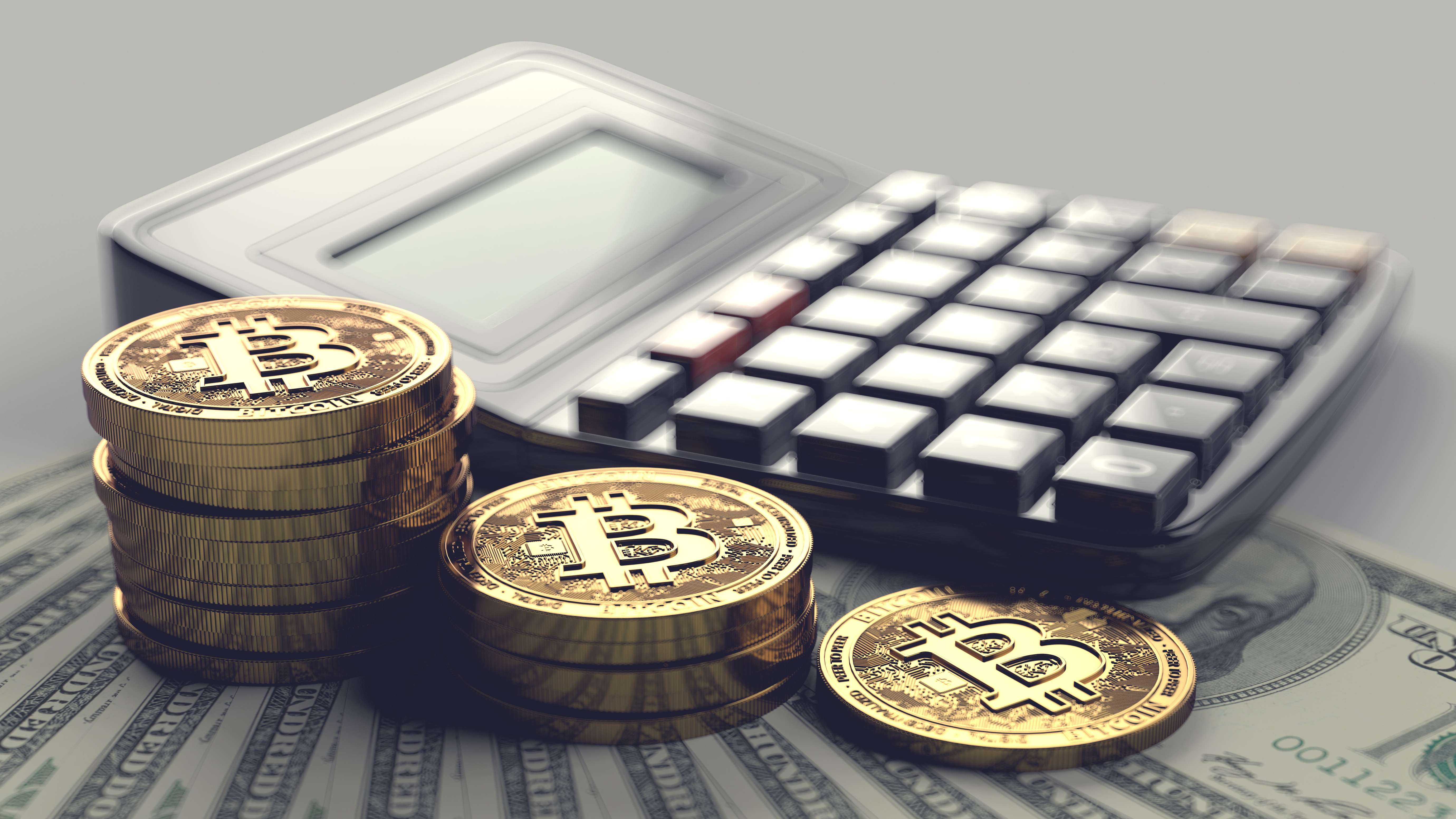
The miners who run the Bitcoin network, and who are still largely incentivized to do so via printing new BTC tokens, are benefiting from an increase in daily network fees, according to data provided by crypto analytics firm Glassnode. Currently, the Bitcoin network rewards its miners with 6.25 Bitcoins for each block mined (approximately every 10 minutes), although the Bitcoin network also charges a small transaction fee, which also goes to miners.
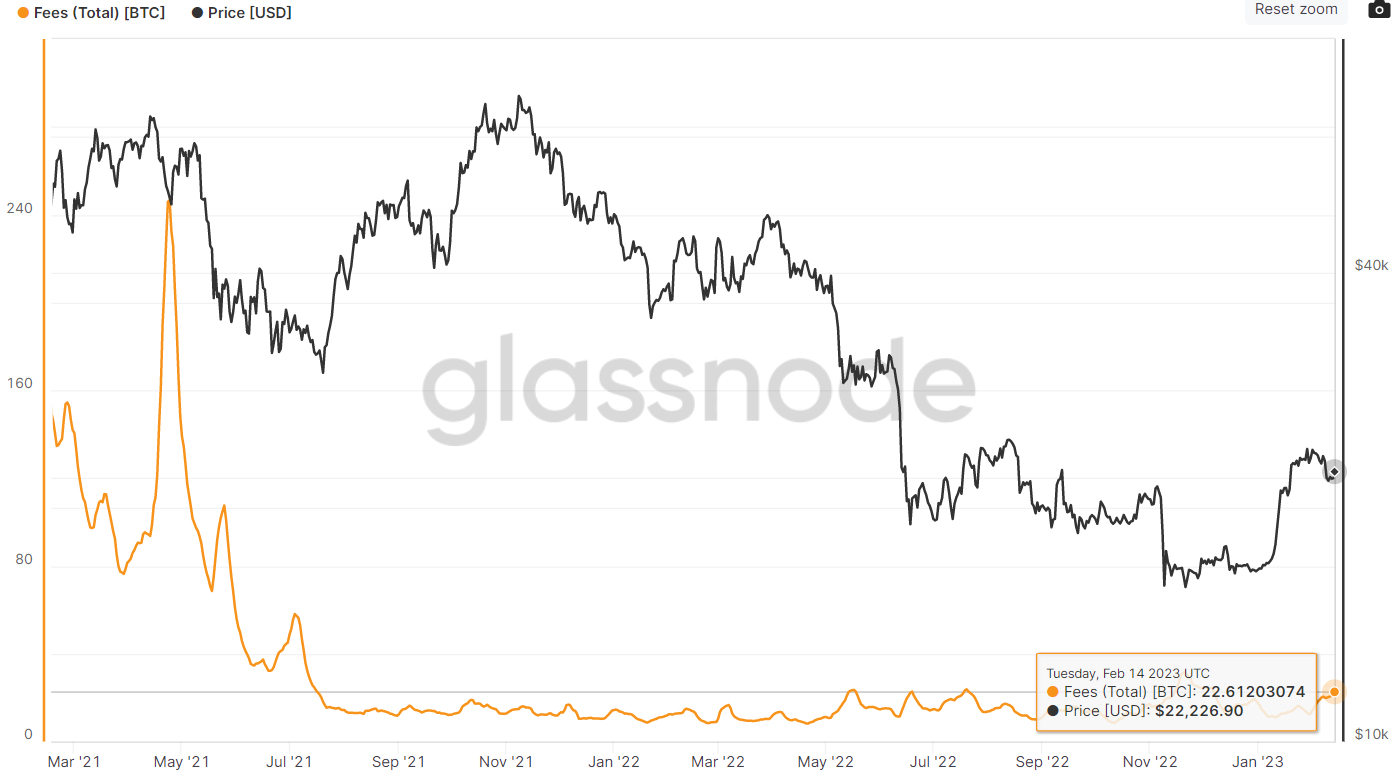
On Tuesday, the seven-day moving average of this fee just hit the highest since early December 2022 at 22.6 BTC. That’s significantly above the 365-day moving average of only around 15 BTC. And this increase in fees is different from the increase in Q4 last year. Last year, Bitcoin owners struggled to get their BTC from exchanges in the wake of the FTX collapse. The fee increase coincided with a short-lived increase in network activity and a drop in the BTC price.
This time, the increase in BTC fee revenue coincides with an increase in Bitcoin’s price since the beginning of the year. According to Glassnode, “a persistent increase in fee revenue as a share of total rewards indicates that Bitcoin blocks are full, and there is increasing demand for transaction activity”. “Given the limited block size of Bitcoin, this has historically provided a valuable early indicator of a macro trend shift in the network demand profile,” they add.
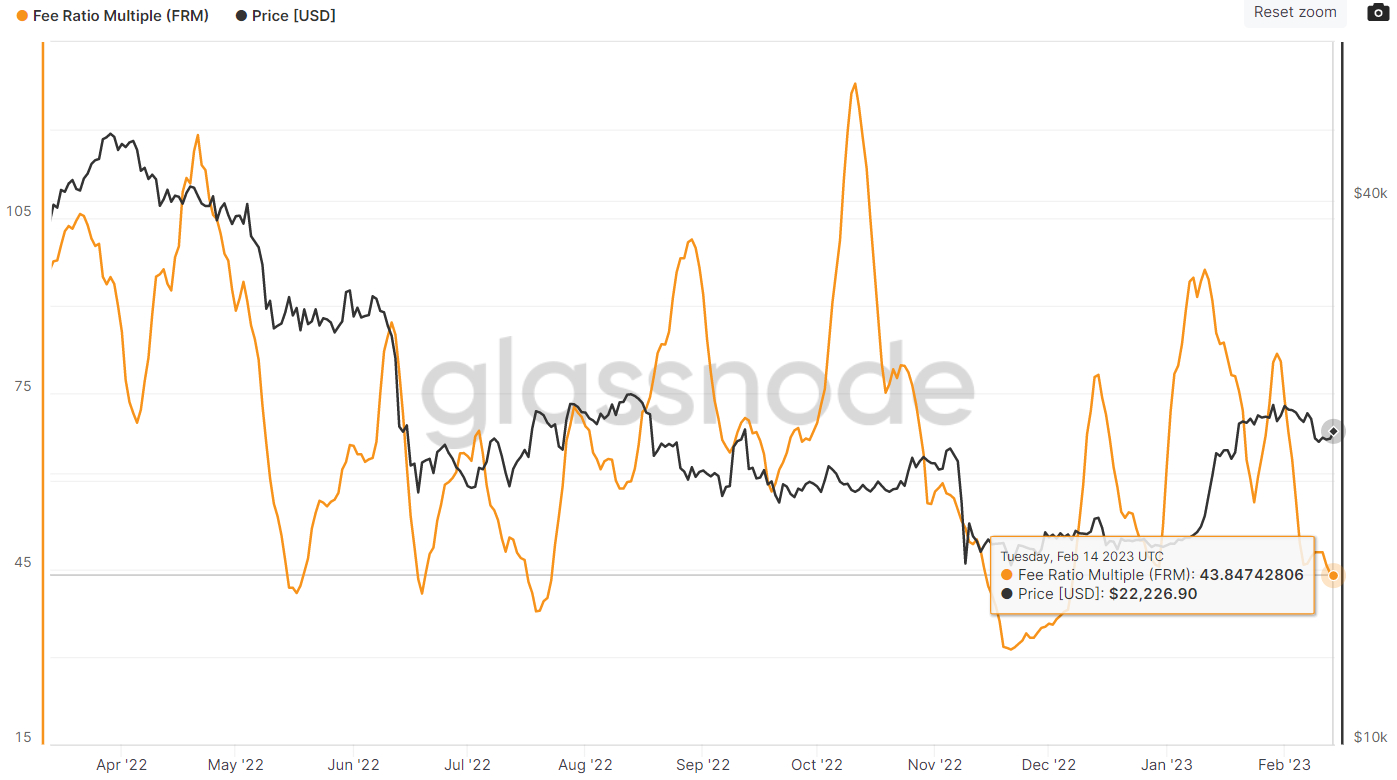
The increase in the BTC-denominated seven-day moving average of daily Bitcoin network fees coincides with a drop in Glassnode’s Bitcoin Fee Ratio Multiple. This multiple is calculated by dividing total miner earnings (which includes newly minted BTC) by daily network fees. When this multiple goes lower, it means that a higher percentage of Bitcoin miner income comes from network fees. The seven-day Bitcoin Fee Revenue Multiple was last around 43.8 on Tuesday, the lowest since early December 2022 and well below the 365-day moving average of around 70.

Fee Income Momentum About To Send Bullish Signal For BTC?
The rise in BTC-denominated Bitcoin network fees means that a key indicator tracked by analysts at Glassnode may be about to turn positive and send its first bullish signal for the Bitcoin market since 2021 (barring a short-lived false signal it sent in November in last year). To provide some context first, Glassnode has a popular dashboard that it uses to measure when Bitcoin can stage a recovery from a bear market called “Recovering from a Bitcoin Bear”.
The dashboard monitors eight on-chain and technical metrics. Two looks at whether Bitcoin is trading above key price patterns (200DMA and realized price). Two are looking at whether market profitability will return. Two looks at whether the balance of USD wealth has shifted sufficiently in favor of long-term HODLers. The last two look at whether the momentum on the Bitcoin network has changed in a positive direction.
Seven of these eight metrics are all flashing bullish signals that the 2022 Bitcoin bear market may be over, as discussed in a recent article. The only metric not flashing a bullish signal is Glassnode’s 2-year Z-score of the revenue-fee multiple – to do this, the 2-year Z-score must turn positive. For reference, the 2-year Z-score is the number of standard deviations above or below the mean of the past two years of data.
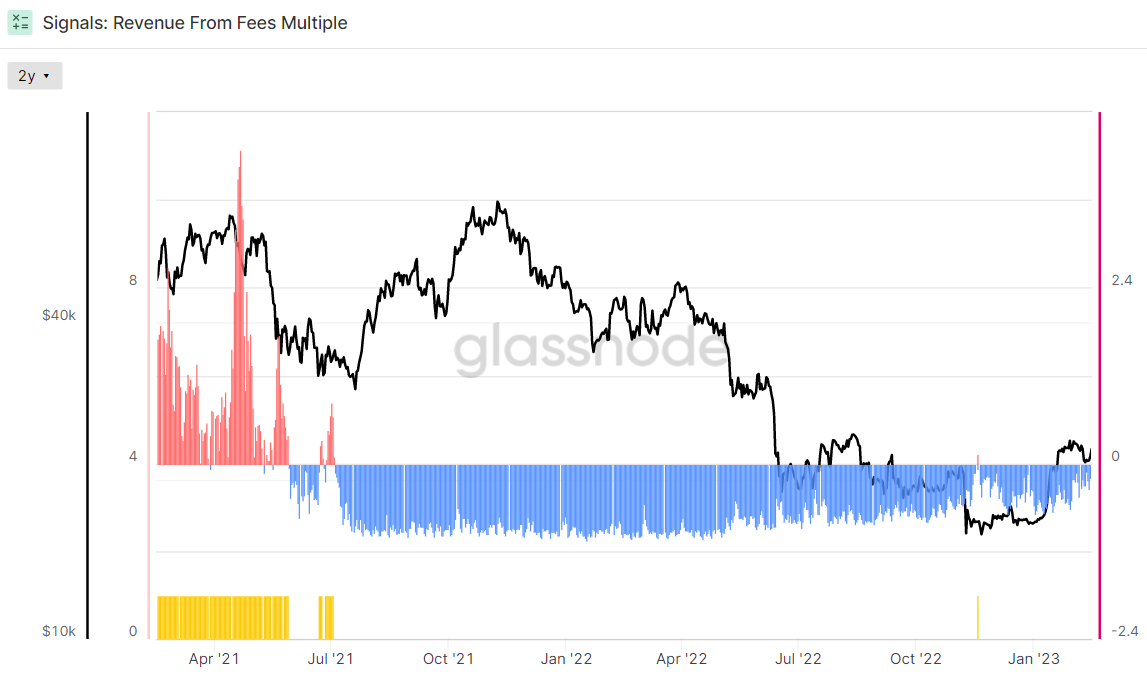
However, amid the recent increase in BTC-denominated network fees that has led to a drop in the fee-to-revenue multiple, the Z-score is approaching very close to zero and may soon turn positive, becoming the eighth of Glassnode’s eight metrics to flash green. The Z-score has trended higher since the start of the year and was last around -0.15.
What does this mean for BTC?
If the 2-year Z-score of the Bitcoin Revenue Fee Multiple turns positive, all eight of Glassnode’s “Recovering from a Bitcoin Bear” dashboard indicators will flash green in unison for the first time in nearly two years. When the dashboard switches from less than eight of the indicators flashing green to all eight, this in itself does not mean anything to the Bitcoin price. As the graphic below shows, during a Bitcoin bull market, it is common to see the dashboard switch between eight and less than eight indicators flashing green.
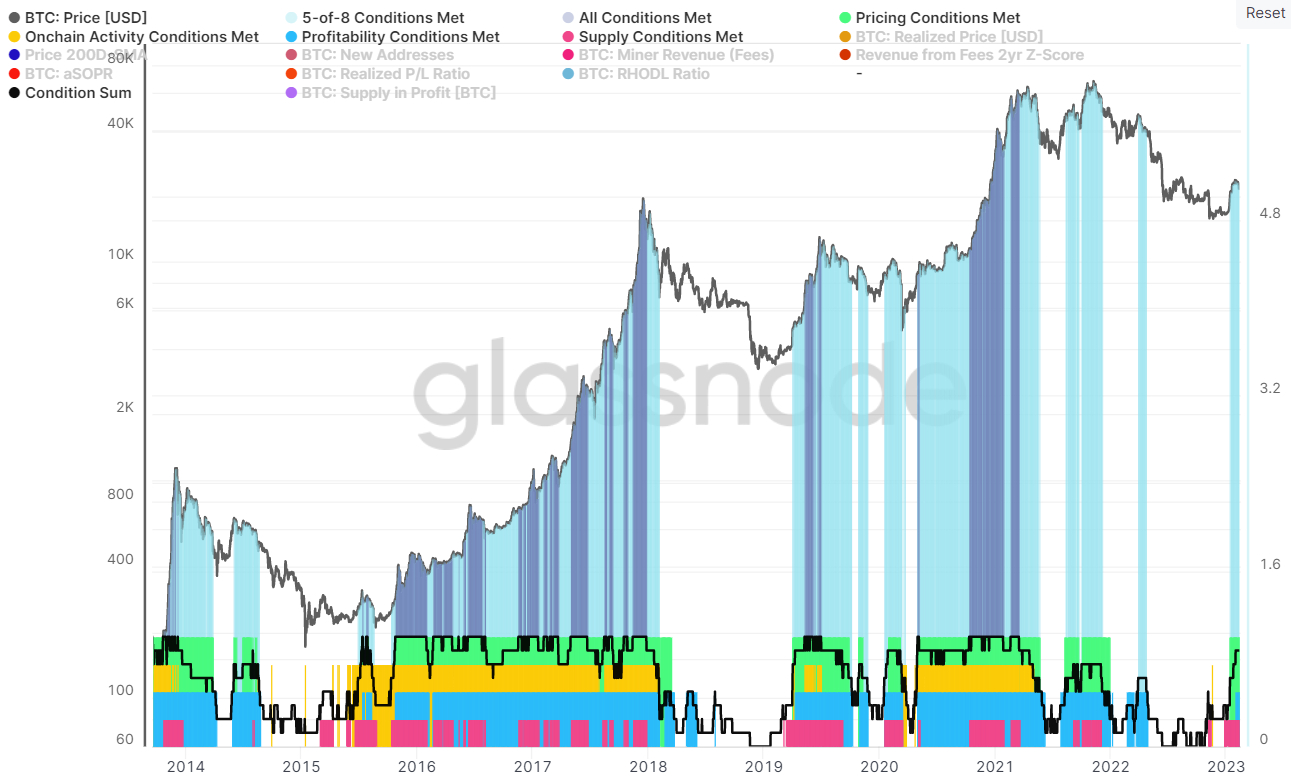
What makes more sense here is when you consider the moment when all eight indicators on the dashboard start flashing green for the first time after a prolonged Bitcoin bear market. The last time this happened was in October 2020, when Bitcoin was trading around $11,500. By April 2021, Bitcoin had risen to $63,000. Before October 2020, all eight indicators had not flashed green since July 2019, except for a brief period in April 2020.
Other examples of when all eight indicators started flashing green for the first time in a long time after a prolonged Bitcoin bear market include in May 2019 and in October 2015. All of these previously mentioned instances represent excellent moments to have bought Bitcoin. If all eight of Glassnode’s Recovering from a Bitcoin Bear indicators start flashing green, as soon as that may be likely, analysts could thus interpret this as a signal that Bitcoin’s risk-reward at current price levels is very good.


